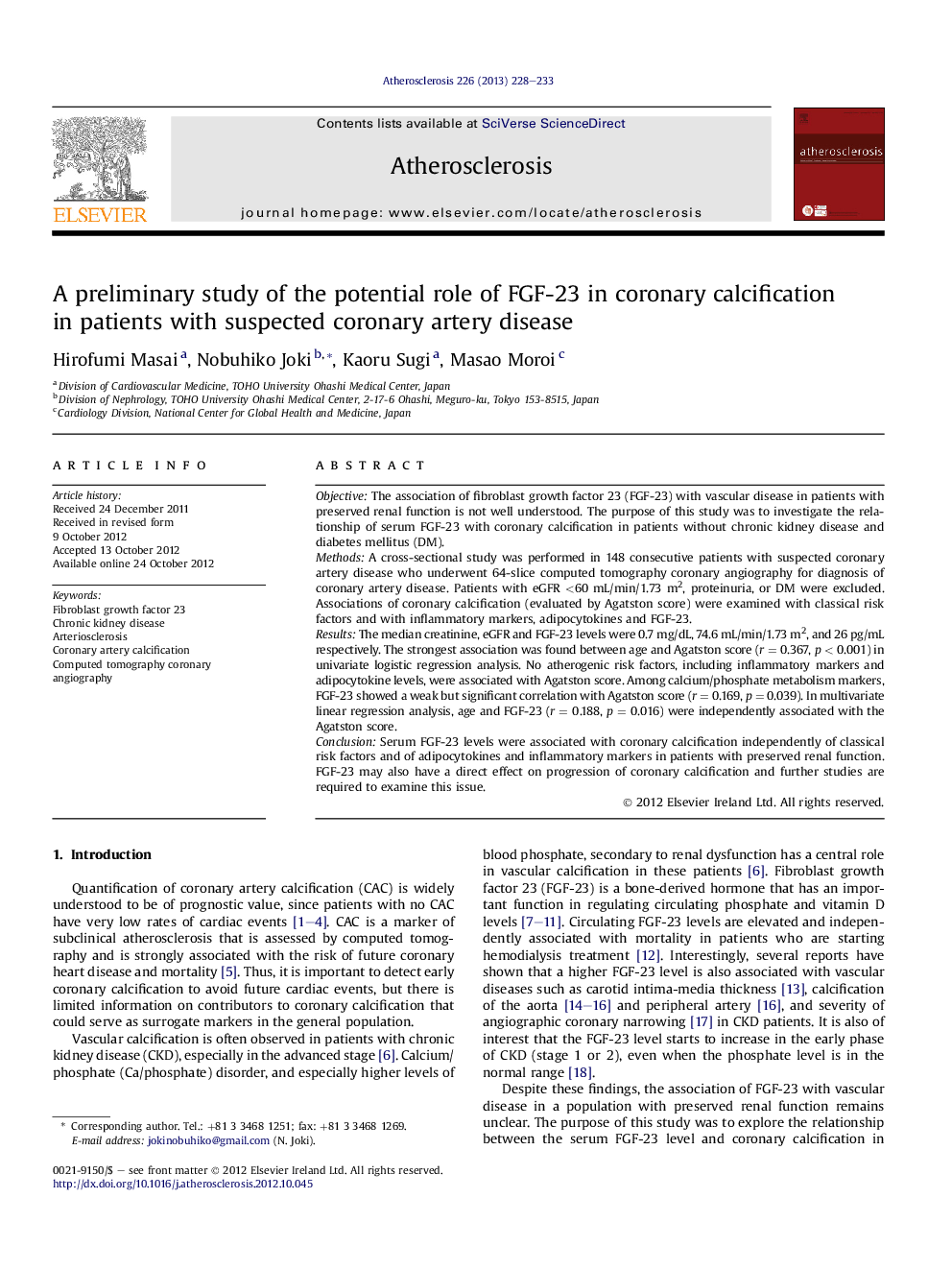| Article ID | Journal | Published Year | Pages | File Type |
|---|---|---|---|---|
| 5948002 | Atherosclerosis | 2013 | 6 Pages |
ObjectiveThe association of fibroblast growth factor 23 (FGF-23) with vascular disease in patients with preserved renal function is not well understood. The purpose of this study was to investigate the relationship of serum FGF-23 with coronary calcification in patients without chronic kidney disease and diabetes mellitus (DM).MethodsA cross-sectional study was performed in 148 consecutive patients with suspected coronary artery disease who underwent 64-slice computed tomography coronary angiography for diagnosis of coronary artery disease. Patients with eGFR <60 mL/min/1.73 m2, proteinuria, or DM were excluded. Associations of coronary calcification (evaluated by Agatston score) were examined with classical risk factors and with inflammatory markers, adipocytokines and FGF-23.ResultsThe median creatinine, eGFR and FGF-23 levels were 0.7 mg/dL, 74.6 mL/min/1.73 m2, and 26 pg/mL respectively. The strongest association was found between age and Agatston score (r = 0.367, p < 0.001) in univariate logistic regression analysis. No atherogenic risk factors, including inflammatory markers and adipocytokine levels, were associated with Agatston score. Among calcium/phosphate metabolism markers, FGF-23 showed a weak but significant correlation with Agatston score (r = 0.169, p = 0.039). In multivariate linear regression analysis, age and FGF-23 (r = 0.188, p = 0.016) were independently associated with the Agatston score.ConclusionSerum FGF-23 levels were associated with coronary calcification independently of classical risk factors and of adipocytokines and inflammatory markers in patients with preserved renal function. FGF-23 may also have a direct effect on progression of coronary calcification and further studies are required to examine this issue.
⺠FGF-23 was closely associated with coronary calcification in normal renal function. ⺠Its association was independent of traditional risk factors. âºÂ FGF-23 potentially could play a role for progression of coronary calcification.
